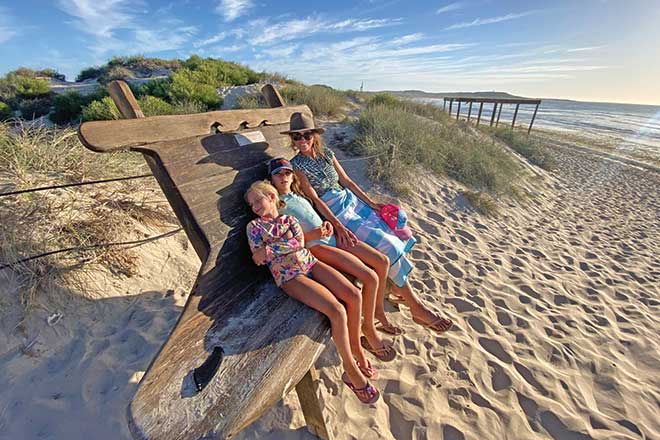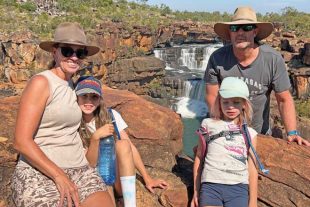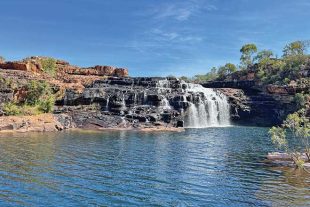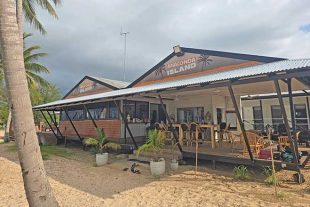Travelling and exploring our country is something I’ve been fortunate enough to do for most of my life, which is probably why I have such a passion for it.
Back when I was 21, I did a lap in an old HX Kingswood panel van with a friend – who is still a good mate today.
I guess that spending quality time with fellow travellers builds strong bonds, which was a big part of why we did the trip – so our family unit would become even stronger and we could foster deeper relationships with each other.
We obviously wanted to see what this country had to offer as well, so to mix the two was a no brainer.
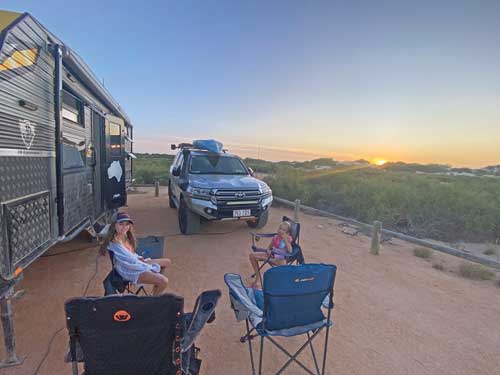
Kurrajong
There are several camp sites in the Cape Range National Park, many situated right next to or only a short stroll away from water.
Kurrajong Camp was no exception, with good-sized caravan spots only seconds from the beach and the Ningaloo Reef, where you could spend hours snorkelling.
There isn’t any fresh water here, so you’ll need to make sure you’re stocked up.
In terms of facilities, there are pit toilets and a couple of benches situated high on the dunes to take in the magical sunsets.
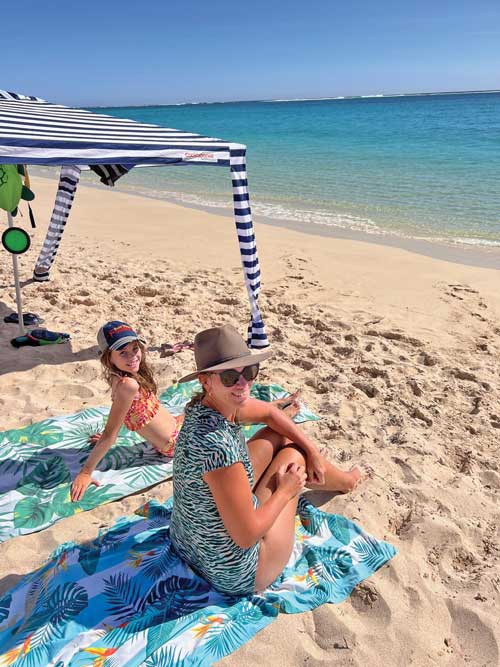
All campsites are unpowered, which you need to take into account.
Though with the amount of sun we had, battery charging wasn’t a problem.
As mentioned, there are several places to stay in Cape Range National Park and Kurrajong would have to be one of the quieter camps, and up there as one of the nicest.
Our time at this spot was very enjoyable.
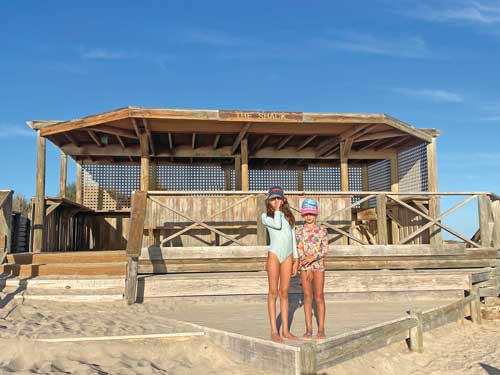
However, like any place, you need to be careful and aware of the creatures around you.
We spent hours snorkelling, enjoying the marine life, and didn’t see even one shark here.
However, a few days after we were there, a shark bite was reported from in the shallows, so stay alert.
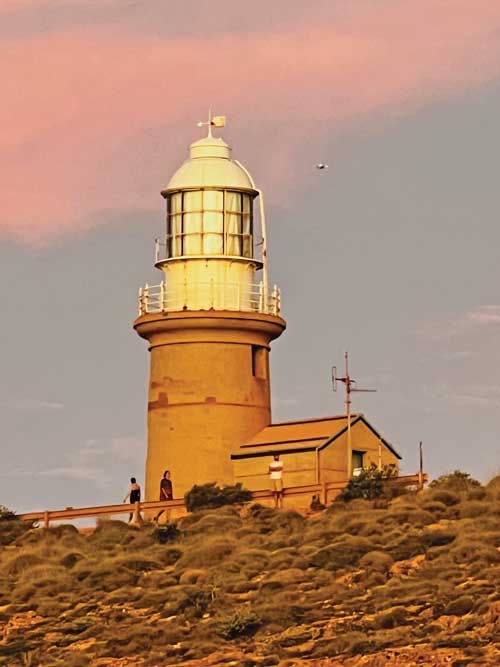
Osprey Bay
There were only two places we booked before leaving and the Osprey Bay Campground was the second.
Thankfully we did because when we were there it was quite busy.
Not that it impacted on our stay, far from it.
The large caravan sites were well spaced out and, if you check out the web before booking, you can score a spot with a view, which is what we did.
Unfortunately, you can’t fly drones here, though plenty of people didn’t follow that rule.
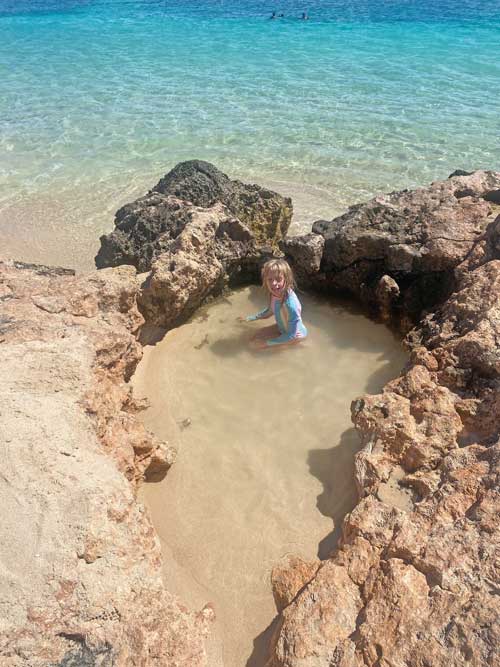
It would have been good to get an aerial shot of our camp to show the magical blue water only 1m from our campsite, but it wasn’t to be.
Osprey Bay is one of the larger camps in the park, with 46 unpowered sites.
Like Kurrajong, there isn’t any fresh water specifically at the campground, yet you can get water in a couple of places within the Cape Range National Park if you need to.
Our JB Scorpion has a relatively large water capacity, so by the time we had our girls trained to manage their water usage, we didn’t have a problem, even though we stayed at this camp for several nights.
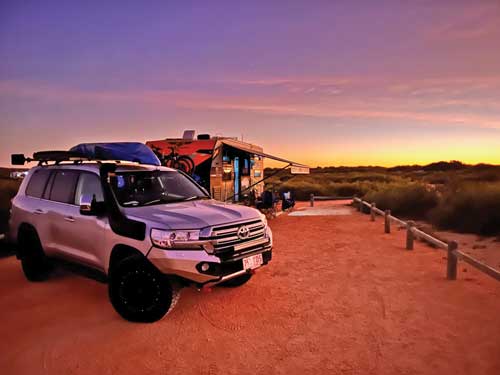
Which allowed us to once again spend plenty of time snorkelling and to check a few of the area’s beaches and gorges out.
If you are keen kayaker and snorkeler, there is a 3.4km route you can do, and two buoys mark the main snorkelling area.
We decided to tackle this trip as a family, with two on the stand-up paddle board and two on the kayak.
Unfortunately, as we were arriving at the first buoy, the weather unexpectedly and dramatically changed, which made paddling very tricky.
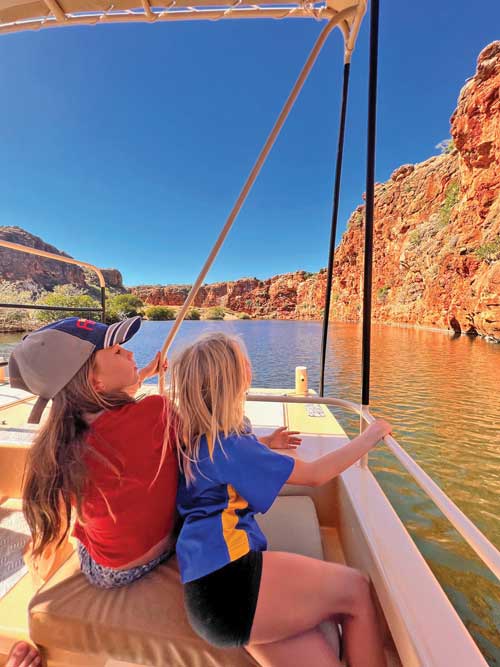
Amaya and Greta, who were on the stand-up paddle board, also encountered what they believed to be a decent-sized tiger shark just before reaching the buoy.
I didn’t get a chance to see it, yet we had very recently viewed one in captivity, along with several other shark species, so I took their word for it.
This sighting certainly dulled the enthusiasm for a snorkel, so the decision was made to head back – which in hindsight was a good call because the weather continued to deteriorate.
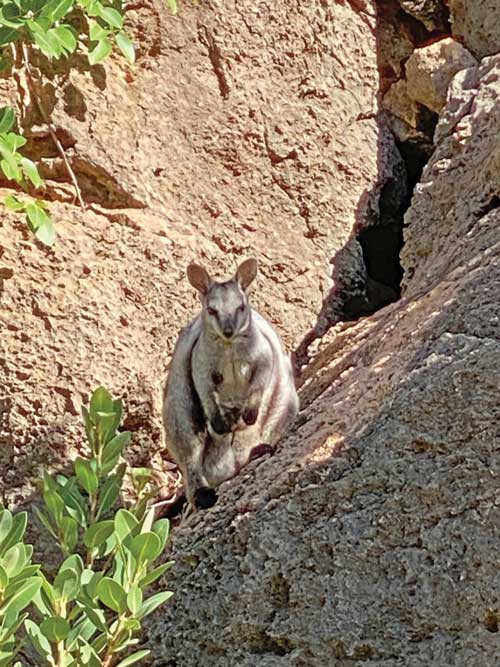
Oyster Stacks
One of our favourite snorkelling locations in Cape Range National Park was the Oyster Stacks.
Ningaloo Reef is only 300m from shore here, which is the closest it gets along the coast.
Combine this with five isolated islets that protrude from the reef and you have an area that is littered with all kinds of marine life.
We were lucky enough to encounter a myriad of fish life and a number of turtles, which fascinated the girls and I.
You don’t have to be a strong swimmer here because you can drift along with the tide.
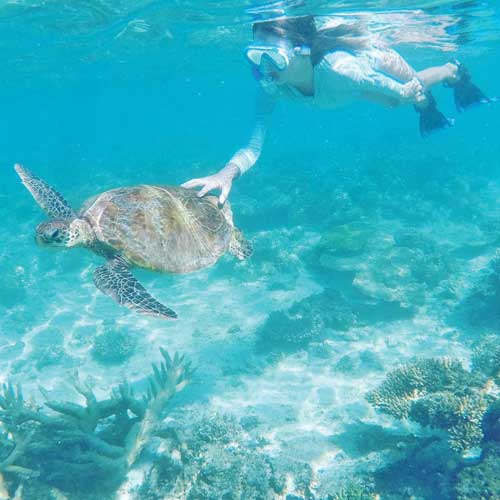
However, you will need to swim either side of a high tide, which needs to be at least 1.2m high.
This ensures there is enough water over the reef so the swimmers and snorkelers don’t damage this fragile piece of nature.
Even though we are all fairly good swimmers, we still took pool noodles to aid us when we floated along.
That didn’t stop us from diving down and getting close to the marine life, but it did make it easier to keep away from the reef in the shallower areas.
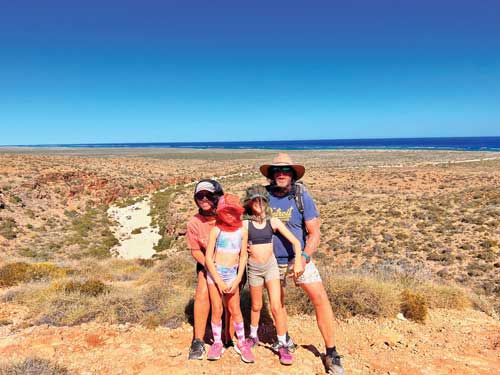
Mandu Mandu Gorge
Littered along the range are several gorges that are worth checking out, such as Mandu Mandu.
The 3km loop is relatively challenging, so a certain level of fitness is required.
Also, depending on which way you attack it, the trail involves first walking along the creek bed, which has heaps of large loose rocks.
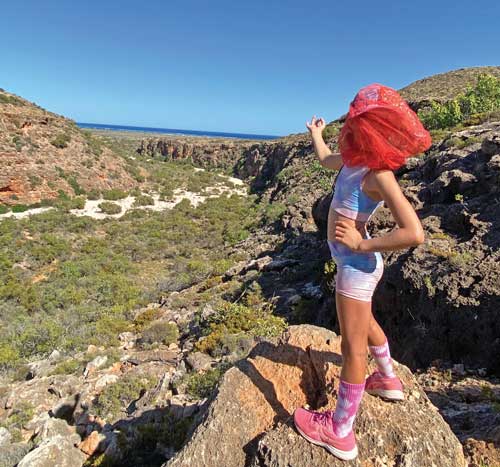
However, this aspect gives you a closer view of the gorge and some of the native animals, including the black-flanked rock wallabies.
You are then required to climb a steep track back up to the gorge rim, which offers a spectacular view of Mandu Mandu and Ningaloo Reef in the distance.
Flies weren’t a problem at any other place in the park, though for some reason they were in plague proportions here – hence the fly nets in the photos – yet it’s still a must do.
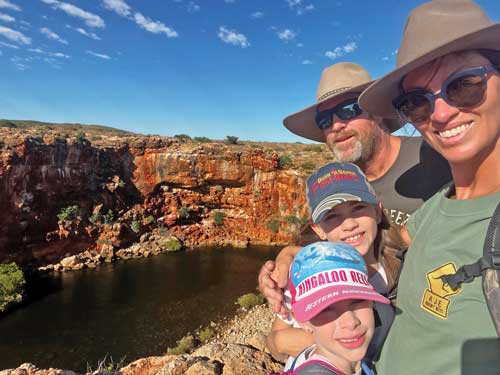
Yardie Creek Gorge
There are a couple of ways to explore this ancient gorge and we managed to tick both off.
One way is to explore the gorge on foot, where you follow a 2km trail that overlooks the red limestone cliffs.
There are several vantage points for taking spectacular photos or to simply sit and take in the view – we recommend both.
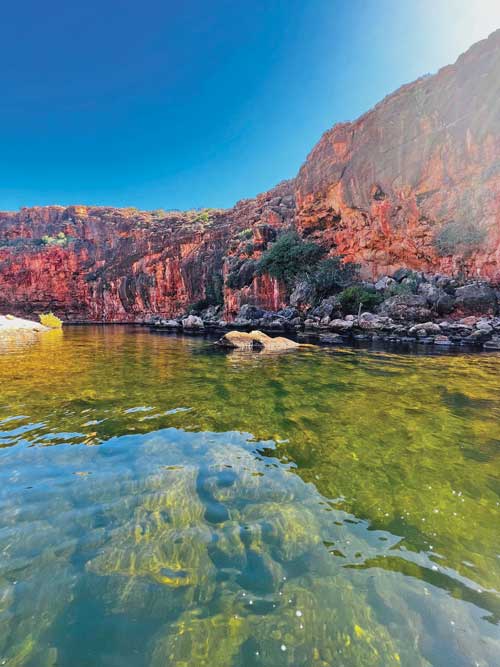
This is a relatively easy walk, with awesome visual rewards.
Another way to explore this gorge is on a guided boat trip, which we also did.
The tour operator was excellent and relayed a host of information about his life on and around Cape Range National Park, the traditional owners and the history of the gorge.
In contrast to the walk, on the boat we got very close to the cliffs, which, as they soared high into the sky and below the water’s surface, allowed us to gain a different perspective and reverence of them.
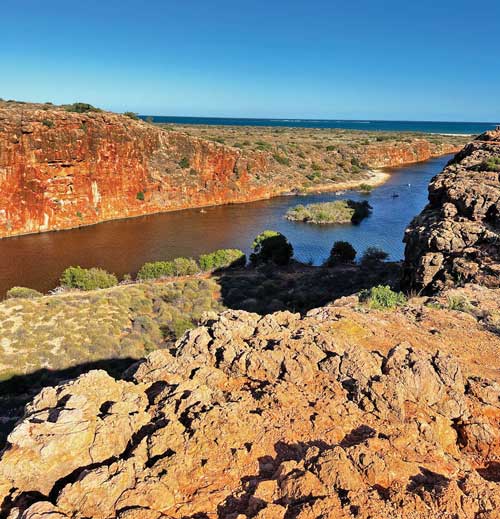
If you’re in this neck of the woods, add it to the must-do list.
Cape Range National Park is a magical place to visit, and I’ve touched on only a few of the key spots we visited.
If you are planning on heading to the park, make sure to check out the exploreparks.dbca.wa.gov.au website for more details.
On this site, there’s also a link to Park Stay, for booking campsites.

